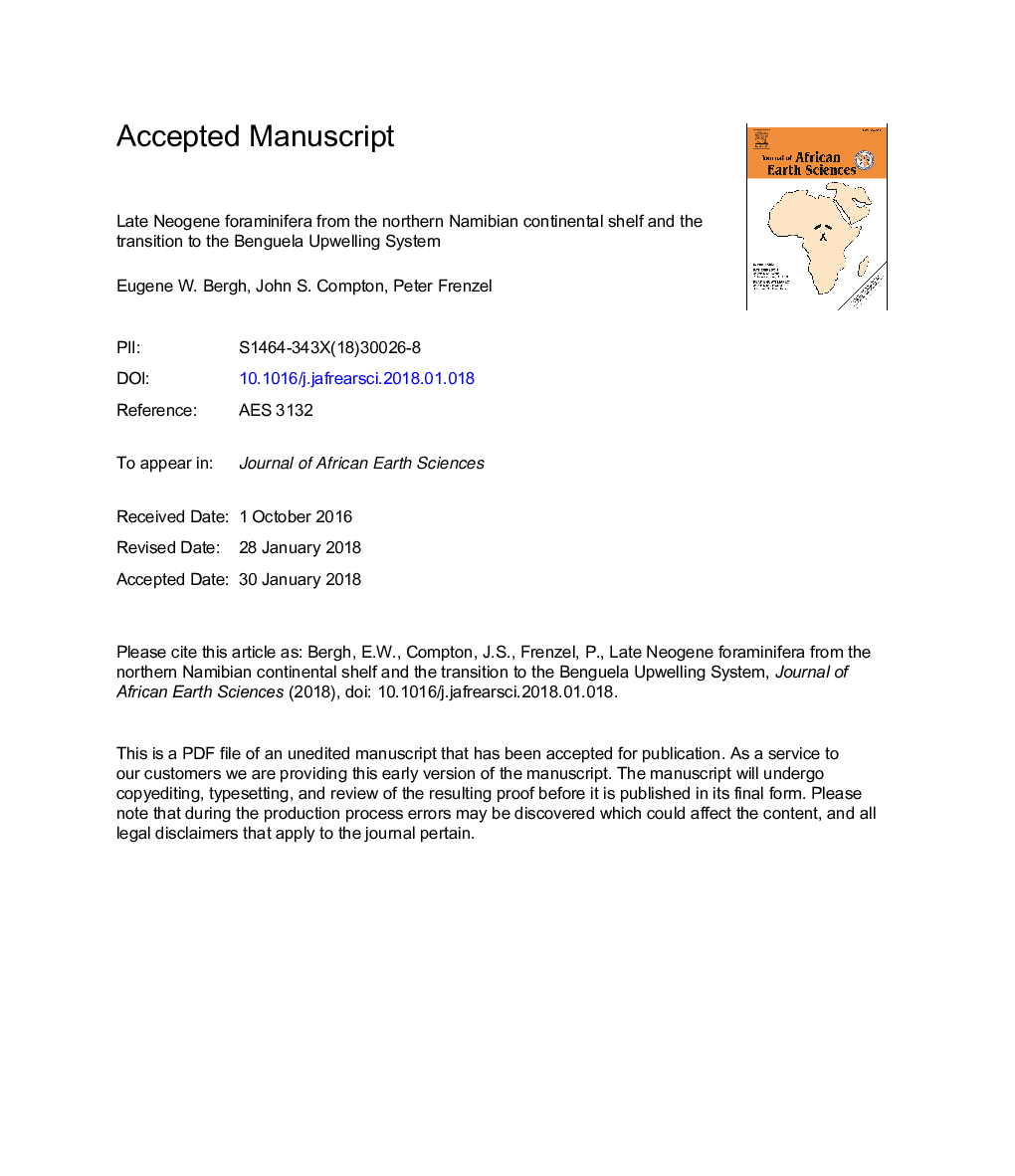| کد مقاله | کد نشریه | سال انتشار | مقاله انگلیسی | نسخه تمام متن |
|---|---|---|---|---|
| 8913518 | 1640167 | 2018 | 49 صفحه PDF | دانلود رایگان |
عنوان انگلیسی مقاله ISI
Late Neogene foraminifera from the northern Namibian continental shelf and the transition to the Benguela Upwelling System
دانلود مقاله + سفارش ترجمه
دانلود مقاله ISI انگلیسی
رایگان برای ایرانیان
کلمات کلیدی
OligotrophicMid-Miocene Climatic Optimum - اواسط میوسن بهینه آب و هواSoutheast Atlantic - جنوب شرقی اقیانوس اطلسForaminifera - روزندارانBenguela upwelling system - سیستم آپوینگینگ BenguelaContinental shelf - فلات قارهPalaeoenvironment - محیط زیست PalaeoenMiocene - میوسنNamibia - نامیبیاPleistocene - پلیستوسن
موضوعات مرتبط
مهندسی و علوم پایه
علوم زمین و سیارات
زمین شناسی
پیش نمایش صفحه اول مقاله

چکیده انگلیسی
Middle Miocene to Plio-Pleistocene foraminifera provide insights into the palaeoenvironment on the northern Namibian continental shelf located at the far northern end of the present-day Benguela Upwelling System (BUS). Biostratigraphy and Strontium Isotope Stratigraphy (SIS) of the recovered basal olive-green mud unit indicate an age of 16 to 14 Ma. A sharp, erosional contact separates the basal mud from the overlying Plio-Pleistocene gravelly pelletal phosphorite sands. Grain size data, P/B ratios and benthic diversity indices indicate a change between the middle Miocene and overlying Plio-Pleistocene palaeoenvironments linked to the timing and conditions associated with the initiation of the BUS. The different lithological units and microfossil assemblages in the olive-green mud unit and the overlying pelletal phosphorite units support the late Miocene initiation of the BUS and the northwards migration of the Angola-Benguela Front. Planktic foraminifera indicate a shift from warmer surface water conditions to cooler conditions during the initiation of the BUS. Benthic palaeobathymetric ranges and P/B ratios are consistent with outer shelf water depths suggesting a deeper palaeoenvironment during the Mid-Miocene Climatic Optimum (MMCO) than today. Benthic foraminifera in the middle Miocene are dominated by large (>1â¯mm) taxa and adapted to oligotrophic environments before the initiation of the BUS. The benthic assemblage composition indicates that bottom water conditions changed to eutrophic conditions during the Plio-Pleistocene under intensified upwelling conditions.
ناشر
Database: Elsevier - ScienceDirect (ساینس دایرکت)
Journal: Journal of African Earth Sciences - Volume 141, May 2018, Pages 33-48
Journal: Journal of African Earth Sciences - Volume 141, May 2018, Pages 33-48
نویسندگان
Eugene W. Bergh, John S. Compton, Peter Frenzel,